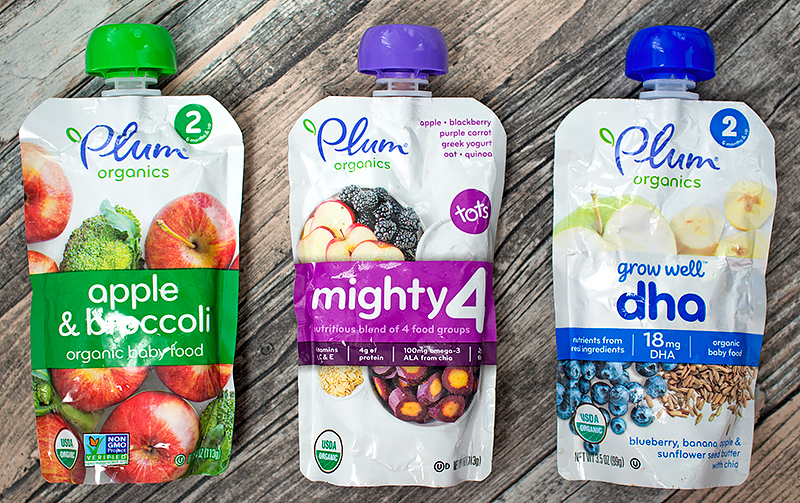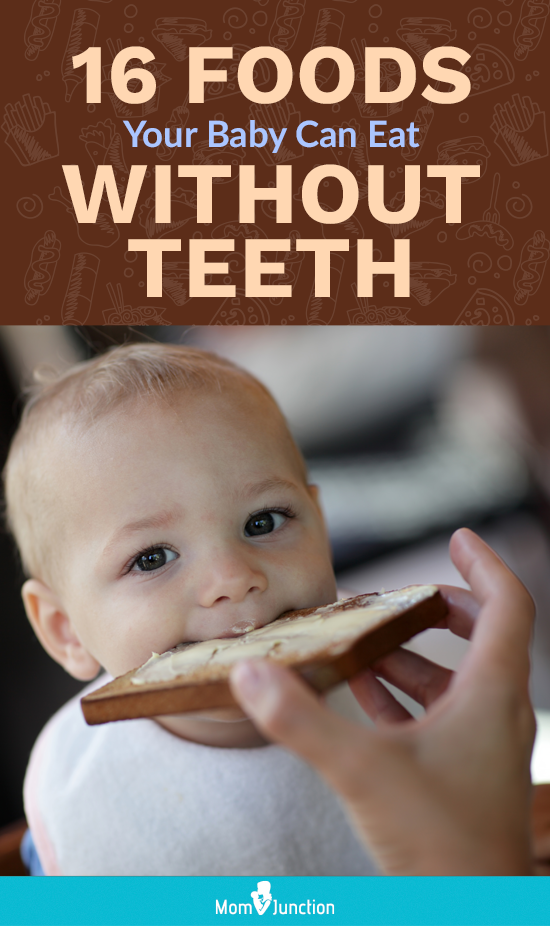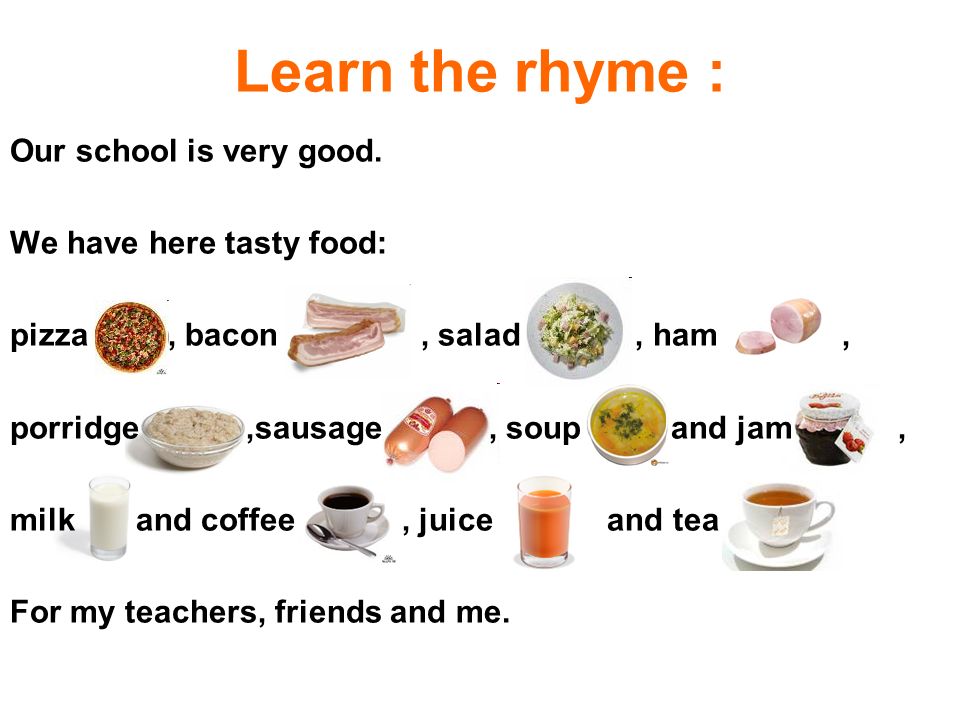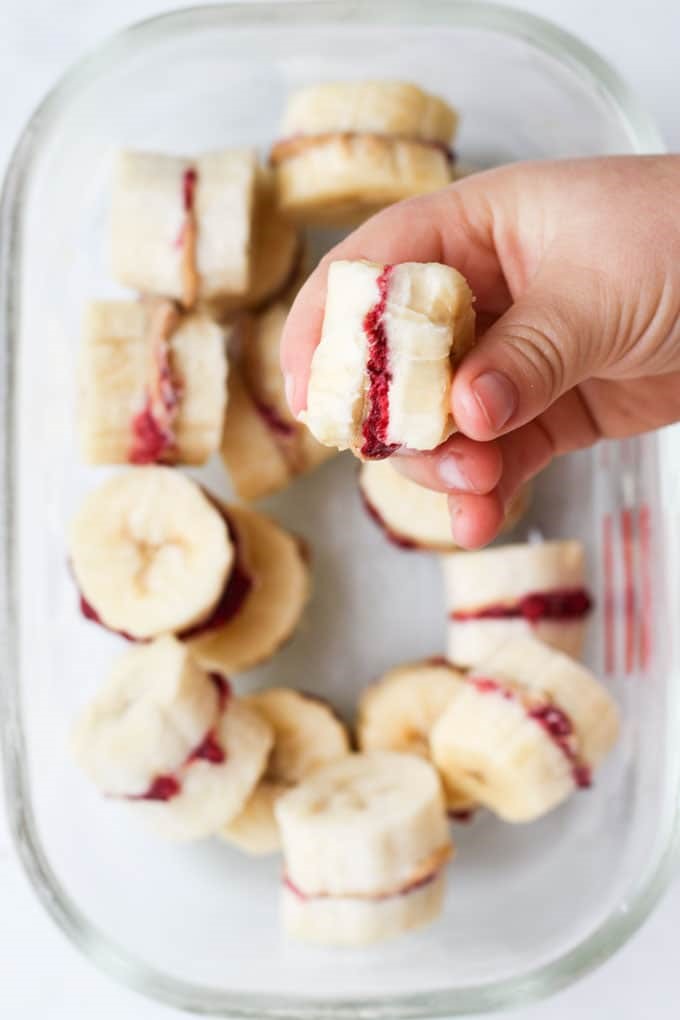What is baby alive food made out of
How to Make Colorful and Scented Doll Food
I have wanted to make doll food for a while. My daughter goes through this stuff super fast. The store-bought packets are great, but they are a bit expensive and don’t last in our home. We need Costco-size pouches to keep up with our hungry dolls.
My daughter loves dolls more than any toy in our house. The moment she gets a new baby, she gives her a name and cares for her in a super sweet motherly way. It is such a joy to see her play. She plays with all her babies every day, but her favorite ones are the types that she can feed and bathe.
For me, the best doll for this feeding activity is the baby born interactive. This doll holds the liquid! You have to press her belly button to release any fluid. This is an excellent feature for the times your dolls diaper is not on correctly or has no diaper at all. I am not saying this is a mess-free activity, but this toy makes my life easier when it’s time to clean up. So, use any doll that is easy to clean.
Ingredients and Materials
I played around with different ingredients and finally settled on using sugar, baking soda, and cornstarch; these three ingredients give the doll food a puree consistency similar to the store-bought. To take it up a notch and make it more realistic, I decided to use paint and scented oils.
As far as paint goes, I always prefer to use washable paint instead of food gel in my crafts. I want to avoid the small chance of staining anything. We made our first batch with food gels, and the doll food came off the doll’s dress without a problem. Still, I decided to make our second batch with washable paint. I feel more comfortable letting my daughter play with something I know I can easily wash.
I use mason jars in a lot of my projects because they are versatile, but you can store yours in any container you prefer.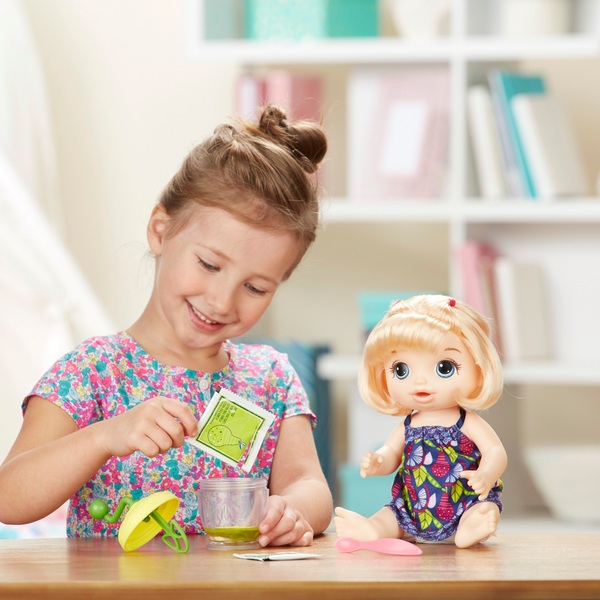
Also, although all the ingredients are non-toxic, I am keeping my jars out of reach from my little one.
Doll food
- Place two tablespoons of granulated sugar into a small mason jar.
- Dip the tip of a toothpick into the paint color of your choice. A tiny bit is enough. Then, dip the paint into the granulated sugar and mix until the color completely incorporates, and you don’t see any speckles. Don’t worry if the powder looks white because it will change color when it comes in contact with the water.
- Mix in a few drops of scented oil (If using).
- Add one tablespoon of baking soda and one tablespoon of cornstarch to the sugar and mix.
- Download and print your food labels. Label each jar. If you want different flavor labels, you can download these cute vegetable and fruit clipart from Etsy.
- Finally, mix the doll food with water. I use 1-2 teaspoons per feeding. Add drops of water until you get a puree consistency.
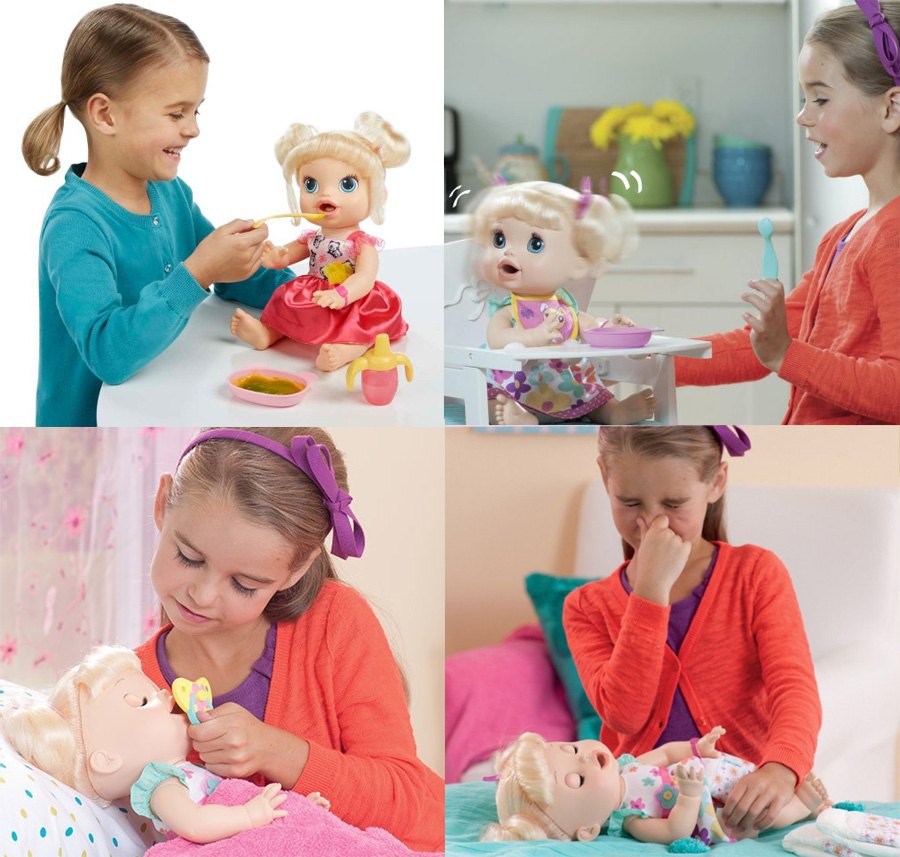 Don’t worry if you add to much water, your little one and the doll won’t mind. ?
Don’t worry if you add to much water, your little one and the doll won’t mind. ?
This doll food is good to use with baby alive, baby born, or any doll that is designed to eat.
The manufacturers recommend flushing the baby food after each use. So, we feed our dolls a warm bottle of water along with the doll food to wash it out.
I hope you found this helpful. Visit our DIY page for more fun ideas.
Baby Alive Grows Up Review - A Doll that Really Grows
May 15, 2021 July 20, 2022
Baby Alive Grows Up is a super popular toy that I’ve been trying to get my hands on since before last Christmas. It was one of the hot toys last Christmas, and it will likely be very popular again this year. I wasn’t sure if this toy would be just another gimmick, but I finally gave in and ordered it. I wanted to share my review with you now so that if you’re like me and have been waiting, you’ll know whether the Baby Alive Grows Up Doll is really worth it or not.
Disclosure: Some links below are affiliate links. This means at no additional cost to you, I earn a small commission if you decide to click through and make a purchase.
What is Baby Alive Grows Up Doll?
So first of all, what is so special about this doll? Well, the whole Baby Alive line by Hasbro is basically meant to be an interactive or “alive” doll line. Other dolls that were previously released in this line eat, pee, poop and talk. The Grows Up doll literally grows right before your eyes.
She starts out as a newborn baby, but grows as you feed her and interact with her first into a baby and eventually into a big girl. The doll physically expands and “grows” by 4 inches (10cm) in size. Like many of the other Baby Alive dolls, Baby Alive Grows Up speaks and interacts with you. She learns to sit up and how to say her first word as she grows. She makes sounds when you feed her and has over 75 phrases she can learn. Her hair will also get longer as she grows.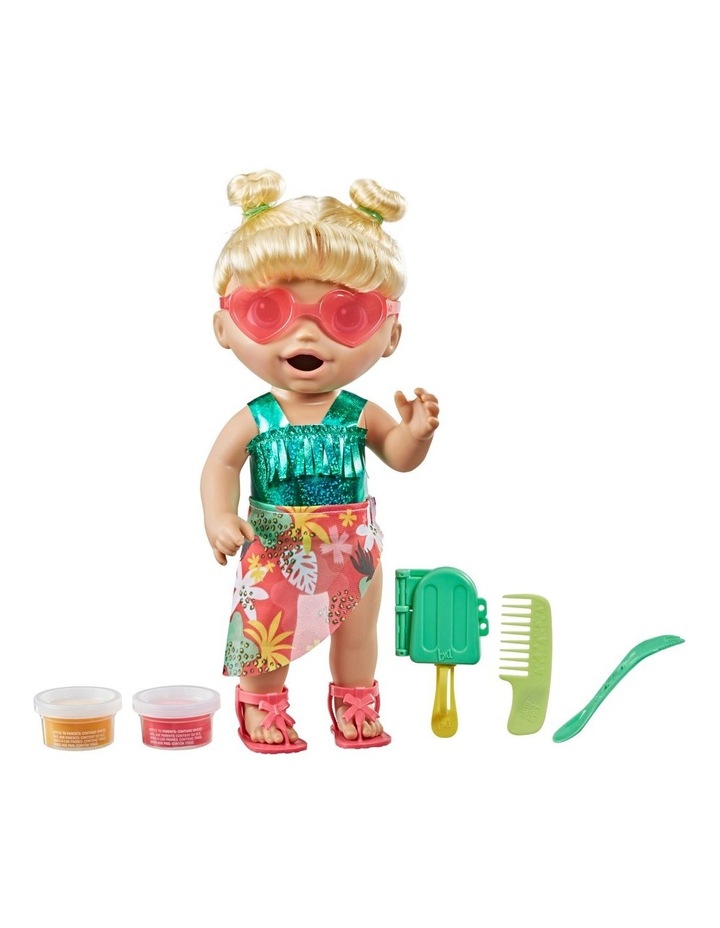 You can even reset the doll back into newborn mode to keep the fun play going.
You can even reset the doll back into newborn mode to keep the fun play going.
Baby Alive – Growing Up Stages
- Stage 1 – Newborn: The doll starts out as a newborn baby. She is swaddled and will coo and open her eyes when fed to reveal her eye color. She is also wearing a hat when she first is unboxed, which can be removed to reveal her hair color. Once baby is fed and rocked enough, she will transform into the next stage: baby!
- Stage 2 – Baby: Once fed and rocked enough, baby will kick out her legs breaking out of the swaddle and transform into a baby. She will then be able to sit up and learn her first words. The stage 2 box includes a bib and food pouch to feed baby. Baby will respond to feeding and playing with babbling that eventually turns into her first words and full responses. Eventually, the doll will be ready to stand up and transform into a big girl. She’ll let you know this by asking to stand and saying “Press my bracelet, hold my hands, help me grow!”
- Stage 3 – Big Girl: Once the doll is stood up and her bracelet is squeezed, baby will physically expand to the full height and be in the big girl mode.
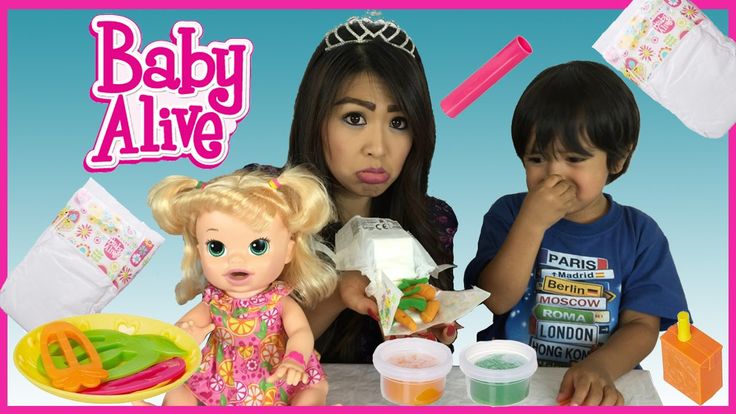 If you brush her hair (and give a bit of a tug), her hair will grow into a full pony tail. Additionally a skirt and shoes are included for playing dress-up with the doll in the big girl phase.
If you brush her hair (and give a bit of a tug), her hair will grow into a full pony tail. Additionally a skirt and shoes are included for playing dress-up with the doll in the big girl phase.
How do I reset Baby Alive Grows Up Doll?
The doll is reset by using the switch on her neck. The switch should be set to “Mommy” or “Daddy” mode on the right when on. To reset the doll, push the switch all the way to off. I usually remove the big girl accessories and lay the doll down face up at this point so that the legs can retract. After a few moments, switch back on to the desired mode. The doll should shrink back, and then you can push the legs back up and swaddle the baby in the provided blanket. Voila, back to baby!
Baby Alive Grows Up – Product Details
There are 3 variations of the Baby Alive Grows Up Doll currently available: Sweet, Happy and Dreamy. Each of these variations has 2 different possible eye color and hair color variations. Making a total of 6 variations in all: Sweet Blossom or Lovely Rosie, Happy Hope or Merry Meadow, or Shining Skylar or Star Dreamer. The dolls also can speak in Spanish or in English.
The dolls also can speak in Spanish or in English.
Additionally, the doll can be set to “Mommy” or “Daddy” mode which changes if the doll addresses it’s caretaker as Mommy or Daddy. The Baby Alive Grows Up doll is recommended for ages 3 and up. The doll does require 4 AA batteries, but they are included, and the doll will work right out of the box. A huge plus as most toys don’t include batteries. The doll weights a little over 4 pounds and is 4.49 x 15.98 x 14.02 inches in size. The doll retails for $49 on Amazon currently.
Pros:
- Truly unique concept of a growing doll
- Entertaining and Interactive doll (speaks, sits and grows)
- Repeatable Play
- Speaks English or Spanish
- Addresses “Mommy” or “Daddy”
- Surprise eye color and hair color makes for a fun reveal
Cons:
- Some reviews mention the doll malfunctioning and not resetting properly (seems highly prone to breaking)
- Does not include other Baby Alive features such as eating, peeing or pooping
- Onesie is not removable, which makes dress up options limited
- Swaddle doesn’t stay on the doll very well
- Relatively Expensive Toy
Final Review – Baby Alive Grows Up
My daughter absolutely loved playing pretend parent to the Baby Alive Grows Up Doll. She was thrilled from the moment she saw her. In fact, the first evening she had her, she played with her for well over an hour before bed. She reset her at least 3 times to grow up all over agin and would not put her down that day. She even tucked her in right beside her to sleep. It was so adorable! Like all young kids, my daughter does have a short attention span, so I appreciate toys that aren’t simply tossed aside in just a few minutes.
She was thrilled from the moment she saw her. In fact, the first evening she had her, she played with her for well over an hour before bed. She reset her at least 3 times to grow up all over agin and would not put her down that day. She even tucked her in right beside her to sleep. It was so adorable! Like all young kids, my daughter does have a short attention span, so I appreciate toys that aren’t simply tossed aside in just a few minutes.
She has continued to play with this doll at least once a day. I really appreciate that the growing stages are repeatable (especially with so many one time use toys out there these days) to keep her coming back for more. She loves all of her baby alive dolls, but this has now become her favorite.
Final Thoughts
While I do think there are some tweaks that could make the doll better, overall I think this doll is a winner and worth the price. The growing doll is truly a unique concept that I have not seen with any other dolls. Additionally, the interactivity of the baby alive dolls is awesome; children just love hearing their baby alive doll talk and feeding them and following their requests. Younger children may require some assistance to reset the doll back to the newborn stage, but it is really simple to reset.
Younger children may require some assistance to reset the doll back to the newborn stage, but it is really simple to reset.
I do wish that the swaddle stayed on a bit better, it falls off if you barely move the doll, but that’s honestly my biggest complaint. If you have a child who loves playing pretend mommy or daddy, I truly think they will adore the Baby Alive Grows Up doll. I personally think it is well worth the higher price as they will get a lot of use out of it with the repeatable play. I think it would make for an excellent birthday or Christmas gift for little kids as well.
Have you tried out the Baby Alive Grows Up Doll? If so, I’d love to hear what you (and your littles) thought about it in a comment down below.
Thanks for stopping by! If you enjoyed this post, you may also want to check out my review of the Little Adventures Toddler Costumes and Dress-Ups.
Theory of generations: the choice of catering establishments.
Staff
article
Subscribe to our Telegram channel to keep abreast of the latest restaurant business news!
In marketing, there are many different theories that explain consumer behavior. In recent years, the theory of generations by Neil Howe and William Strauss has gained popularity. Classical marketing does not keep up with the rapidity of changes, and one of the guidelines for marketers can be deep values, which the theory of generations helps to understand.
In recent years, the theory of generations by Neil Howe and William Strauss has gained popularity. Classical marketing does not keep up with the rapidity of changes, and one of the guidelines for marketers can be deep values, which the theory of generations helps to understand.
Now they are talking about six generations: the "silent" generation (born in 1923-1945), "baby boomers" (1946 - 1963), generation X (1964 - 1981), generation Y (1982 - 1999) , Generation Z (2000 - 2014) and Generation Alpha (born since 2015). In different sources, gradation by year differs, but the essence of this does not change. The “silent” generation, due to age, has practically no effect on the catering market, and the “Alpha” generation does not yet choose independently which institution they will end up in, therefore, in this article we will consider the factors when choosing institutions, what is important in institutions and which information channels work best for each of the four generations mentioned: Boomers, X, Y, and Z.
"Baby Boomers", when choosing an establishment, first of all, they pay attention to the comfort, status of the establishment and the history of the place. A restaurant or cafe should have a choice of dishes and drinks, preferably simple and familiar, which this generation associates with the holiday from childhood: Olivier, Herring under a fur coat, Napoleon cake, etc. Of course, this does not mean that they don't like to try new things, but new dishes for the boomer generation are more of an indicator that they are aware of their existence and, on occasion, can mention that they have already tried it. This is a generation of those who remain "forever young" and therefore do not like mentions of age and offers of help from waiters, for example. They will understand the menu themselves, but for this it must be written in a readable, clear font, with a detailed description of the composition of the dishes. The room itself and the seating layout should also be simple and understandable, a clear distinction between the bar counter and soft, comfortable seating, the allocation of areas for communal tables: they are feast lovers, collectivists.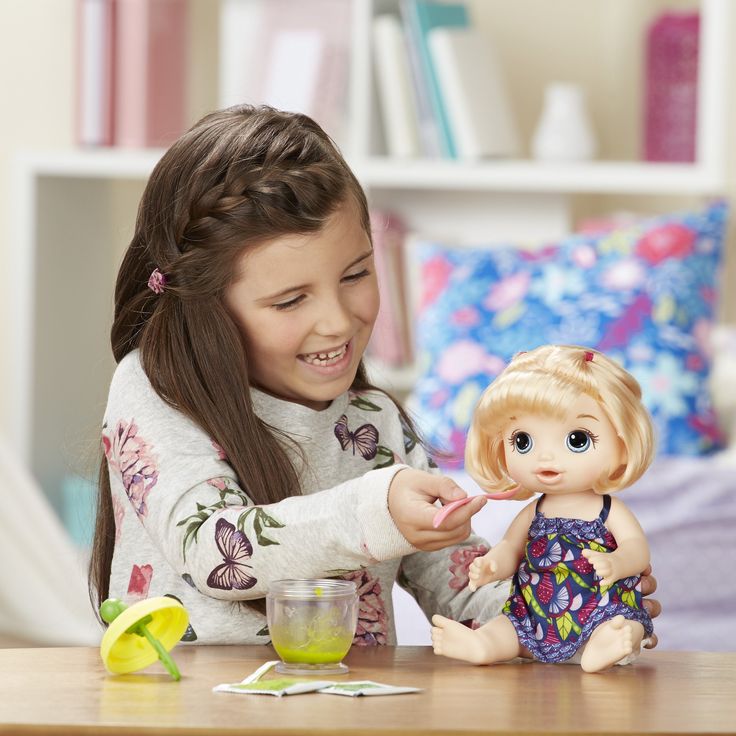 As for the most effective channels for informing this generation, these are, without a doubt, recommendations from relatives and friends, printed publications (guides, status magazines), and radio. Any message addressed to boomers should be saturated with optimism, pictures of an interesting future, the images in the photo are a little younger than this generation, the words should be Russian, and the wording should be clear.
As for the most effective channels for informing this generation, these are, without a doubt, recommendations from relatives and friends, printed publications (guides, status magazines), and radio. Any message addressed to boomers should be saturated with optimism, pictures of an interesting future, the images in the photo are a little younger than this generation, the words should be Russian, and the wording should be clear.
Generation X appreciates the speed of service, the uniqueness of the establishment, the place must be verified, preferably on their own experience. The generation grew up in an era of scarcity, so they like to try everything new, including new dishes. But, if for boomers to try “new” means to put a tick, then for Xs it is important to find a product that suits them. This generation grew up in the era of the arrival of the Western and the development of domestic fast food, in addition, they value their time, so this format is one of the most popular among the X's.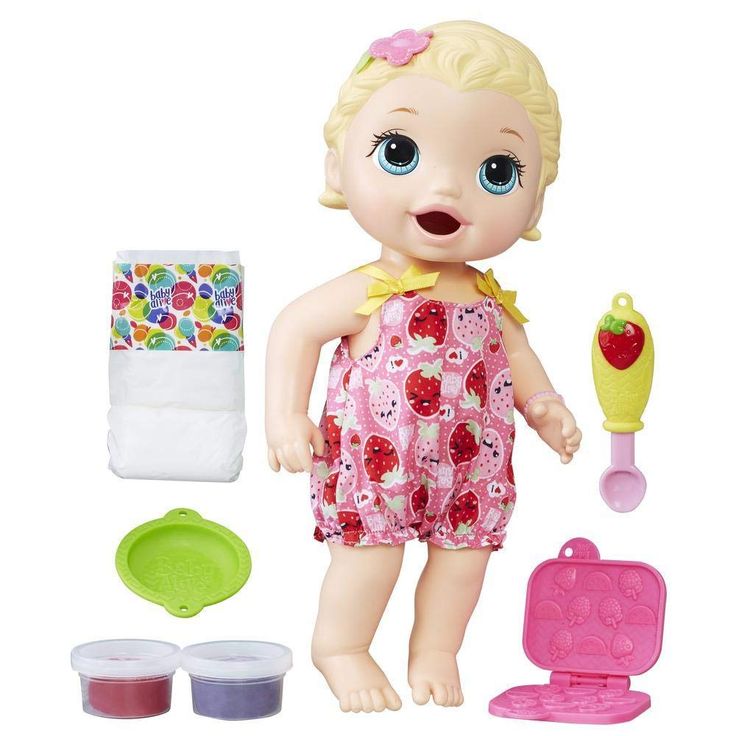 Due to their pragmatism, they prefer combo offers, promotions, large portions, but they are ready to pay for speed and variety. Unlike younger generations, they are more fond of alcoholic drinks, so pubs and bars are also establishments for them. They appreciate the level of service, individual approach and emotions - an interesting interior, serving dishes, visiting places with dancing and live music is what they will definitely pay attention to and will be your regulars until you disappoint them. Perhaps they will give another chance, but if the disappointment repeats, they will not return again, no matter what they were promised. They trust word of mouth, notice outdoor advertising, and draw on their own experience. To capture the attention of this generation, advertising must surprise them, give them the opportunity to make their own choices, and focus on saving time and effort. The wording is specific that you have just for them.
Due to their pragmatism, they prefer combo offers, promotions, large portions, but they are ready to pay for speed and variety. Unlike younger generations, they are more fond of alcoholic drinks, so pubs and bars are also establishments for them. They appreciate the level of service, individual approach and emotions - an interesting interior, serving dishes, visiting places with dancing and live music is what they will definitely pay attention to and will be your regulars until you disappoint them. Perhaps they will give another chance, but if the disappointment repeats, they will not return again, no matter what they were promised. They trust word of mouth, notice outdoor advertising, and draw on their own experience. To capture the attention of this generation, advertising must surprise them, give them the opportunity to make their own choices, and focus on saving time and effort. The wording is specific that you have just for them.
Millennials of prefer new and trendy places where they can not only eat but also have fun.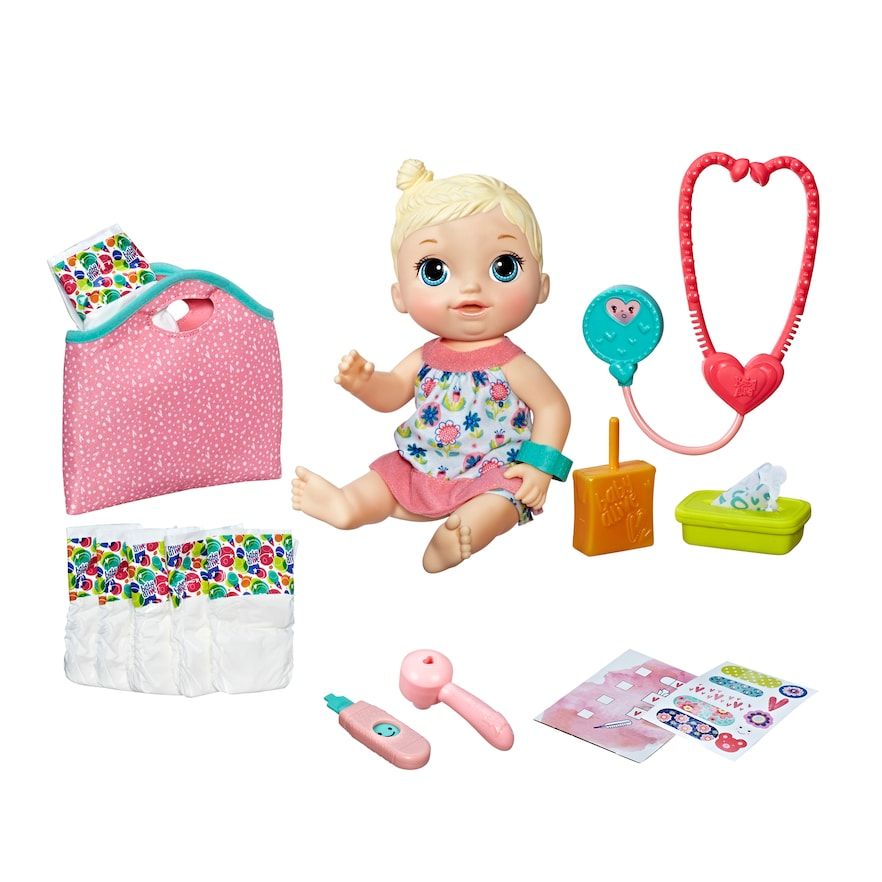 If the “X”s find “their” places by experience and remain their adherents for a long time, then the “Ys” do not have a limited range of establishments, they visit new and new places, sometimes returning. New dishes and places - new emotions. In addition, they are aesthetes and it is important that the place, dish, drink be beautiful, bring pleasure, both in taste and appearance. Among them, there are more adherents of soft drinks compared to previous generations. "Yigers" like to eat on the go, while paying a lot of attention to the content of proteins, fats and carbohydrates, often prefer vegetarian food. They are adherents of proper nutrition, pay attention to the energy value, the content of minerals, vitamins and the percentage of fat. Vegetarianism, total rejection of meat or flexitarianism are quite popular in this environment. Growing in popularity, food halls, and soon bar courts, the favorite places of this generation, here you can try different food and drinks, different cuisines, and also soak up emotions.
If the “X”s find “their” places by experience and remain their adherents for a long time, then the “Ys” do not have a limited range of establishments, they visit new and new places, sometimes returning. New dishes and places - new emotions. In addition, they are aesthetes and it is important that the place, dish, drink be beautiful, bring pleasure, both in taste and appearance. Among them, there are more adherents of soft drinks compared to previous generations. "Yigers" like to eat on the go, while paying a lot of attention to the content of proteins, fats and carbohydrates, often prefer vegetarian food. They are adherents of proper nutrition, pay attention to the energy value, the content of minerals, vitamins and the percentage of fat. Vegetarianism, total rejection of meat or flexitarianism are quite popular in this environment. Growing in popularity, food halls, and soon bar courts, the favorite places of this generation, here you can try different food and drinks, different cuisines, and also soak up emotions.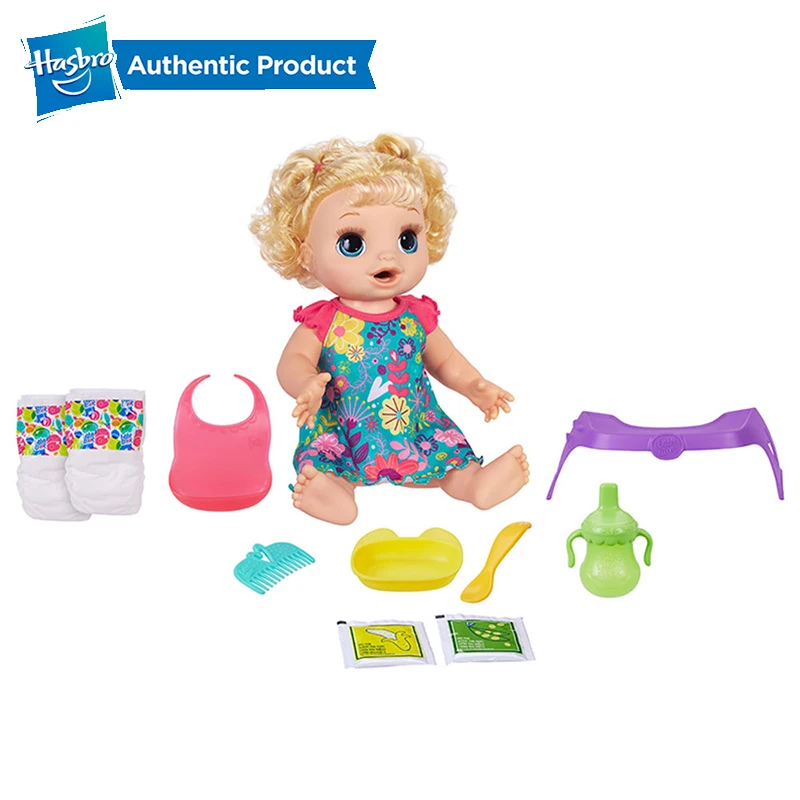 In addition, this generation is the main consumers of the delivery service. They are actively involved in loyalty programs if they give bonuses and guarantee discounts, and if the program is built on the principle of the game, then this is an additional bonus. Advertising in social networks and the Internet is one of the main channels for informing this audience; they often use sites with reviews and, of course, recommendations from friends. Messages should carry sincerity and optimism, use real characters with their strengths and weaknesses, be remembered by sound, image and main emotion.
In addition, this generation is the main consumers of the delivery service. They are actively involved in loyalty programs if they give bonuses and guarantee discounts, and if the program is built on the principle of the game, then this is an additional bonus. Advertising in social networks and the Internet is one of the main channels for informing this audience; they often use sites with reviews and, of course, recommendations from friends. Messages should carry sincerity and optimism, use real characters with their strengths and weaknesses, be remembered by sound, image and main emotion.
Generation Z pay attention to the aesthetics and visuals of the place, environmental friendliness and manufacturability. Unlike the “gamers”, there are more introverts among them, they do not like live communication and prefer delivery, among other things, because there is no need to communicate with the operator if you give them such an opportunity. The ability to order dishes without communicating with the waiter/cashier, for example, through the terminal, will also be appreciated by representatives of this generation.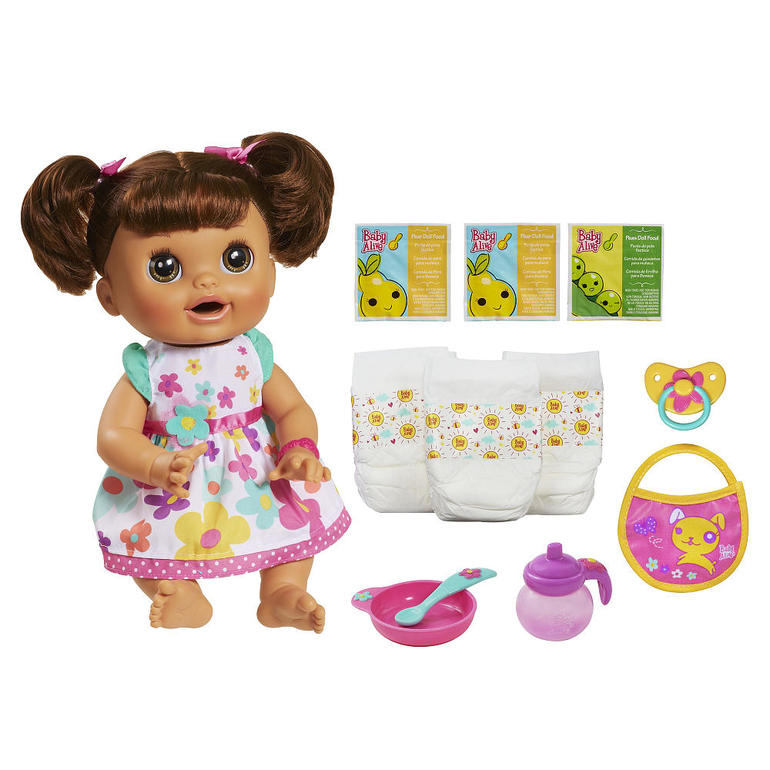 Due to the limited financial capabilities of the majority of Zed representatives, they prefer budget establishments (coffee houses, fast food) and the opportunity to buy a promotional offer. Despite the fact that the favorite dishes of this generation are pizza, burgers and “snacks”, many people try to eat right and will be happy to order homemade food and healthy meals. They also like coffee and soft drinks, desserts and sweet dishes. The more you impress this generation with the appearance of a drink or dish, the more likely they are to mention it on their social media. From childhood, they were taken to master classes in cooking various dishes, so they are happy to visit establishments that provide such opportunities. Advertising through bloggers, video advertising on the Internet and youtube, as well as in other social networks will allow you to be noticed by this generation. They prefer pictures, and even better short videos, offers that can be obtained immediately. In the message, it is necessary to combine their vocabulary and terms with good and eternal values.
Due to the limited financial capabilities of the majority of Zed representatives, they prefer budget establishments (coffee houses, fast food) and the opportunity to buy a promotional offer. Despite the fact that the favorite dishes of this generation are pizza, burgers and “snacks”, many people try to eat right and will be happy to order homemade food and healthy meals. They also like coffee and soft drinks, desserts and sweet dishes. The more you impress this generation with the appearance of a drink or dish, the more likely they are to mention it on their social media. From childhood, they were taken to master classes in cooking various dishes, so they are happy to visit establishments that provide such opportunities. Advertising through bloggers, video advertising on the Internet and youtube, as well as in other social networks will allow you to be noticed by this generation. They prefer pictures, and even better short videos, offers that can be obtained immediately. In the message, it is necessary to combine their vocabulary and terms with good and eternal values.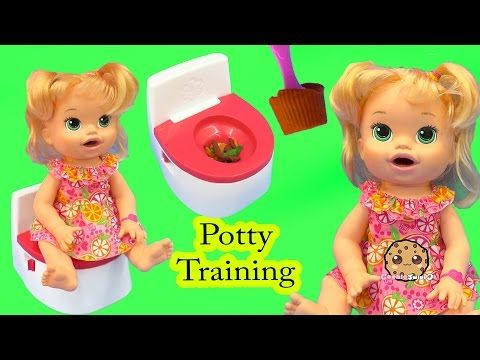 And yes, they do not like long texts and, in principle, texts.
And yes, they do not like long texts and, in principle, texts.
Mar 03 2020
Anna Savinova
Expert in the field of restaurant marketing
Recommended materials
We debunge myths from popular nutrition books
Do not eat wheat - You lose weight
OTNAYDPHOTOS.COMand The wheat belly by William Davis.
Thesis
According to the American cardiologist, Dr. William Davis, the main cause of excess weight is wheat.
Humans have been eating wheat for about 10,000 years. However, the varieties cultivated now are very different from the wheat of the past. They contain gluten, which, in turn, stimulates the appetite.
Modern wheat also contains amylopectin. This carbohydrate is quickly absorbed, causing a jump in blood sugar. A lot of insulin is released from the pancreas, which leads to the accumulation of internal fat. As a result - the stomach, excess weight and a "bouquet" of concomitant diseases.
Antithesis
Books from the Wheat Belly series are very argumentative, and therefore convincing. Dr. Davis is consistent on why modern wheat is a health problem. In particular, he links the popularization of hybrid wheat varieties with the increase in the number of obese people. But correlation ≠ causation.
One of the reasons for the increase in the number of overweight people is the aging of the baby boomer generation. Whether you eat wheat or not, with age, fat is deposited on the stomach and sides.
Yes, abdominal fat (also known as abdominal or visceral fat) is quite insidious: it provokes the synthesis of cortisol, the stress hormone. And if you follow this logic, then there is fat "good" and "bad". But, according to recent studies, deposits in the gluteal adipose tissue that were considered harmless lead to the development of metabolic syndrome (pre-diabetic condition). Therefore, gluteal fat (the one on your butt) is just as dangerous as abdominal fat.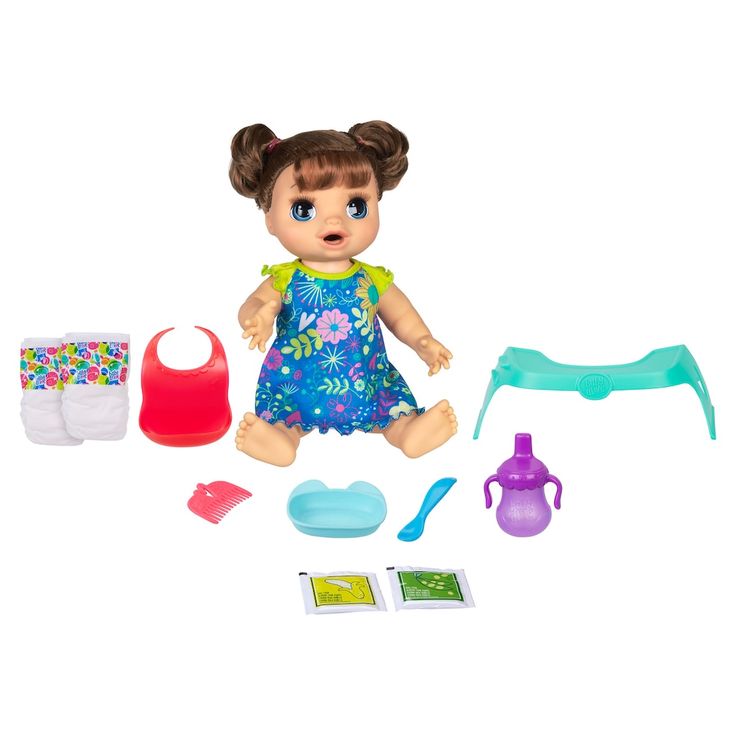
But even assuming that belly fat is is the most harmful , is wheat to blame for its formation? Big question...
If you really want to get rid of your belly, study saturated and unsaturated fatty acids and watch your carbohydrate intake. There are studies showing that people whose diet contains unsaturated fats and digestible fiber (oats, beans, barley) gradually get rid of visceral fat.
Lower your pH if you want to be slim
lucidwaters/Depositphotos.comBooks: The alkaline cure by Stéphane Domenig, The eating the alkaline way Natasha Corrett, The amazing acid-alkaline cookbook by Bonnie Ross.
Thesis
There are many types of alkaline diets. Their essence is to achieve the optimal acid-base balance of nutrients in the body. It is believed that due to this, metabolism is normalized and excess weight will go away. Increased acidity reduces activity, destroys bones and provokes diseases. An alkaline environment, on the contrary, is considered beneficial.
An alkaline environment, on the contrary, is considered beneficial.
Each product is either acidic or alkaline. At the same time, they have a diametrically opposite effect on the body. Acidic ones alkalinize, while neutral ones oxidize. The optimal ratio is considered to be 70% alkalizing foods (greens, vegetables, fruits, berries) and 30% acid-forming (natural coffee, proteins, cottage cheese, beans, pasta, and so on).
Antithesis
Maintenance of normal blood pH depends, among other things, on the functioning of the kidneys. Acid-base balance in human blood is one of the most stable parameters. Diet as such cannot break it.
A review of scientific research on the benefits of alkaline nutrition found that there is no convincing evidence that alkalizing foods strengthen bones and protect against osteoporosis. There is nothing wrong with eating more vegetables and fruits (they are just lower in calories, after all), but alkaline diets should not be considered a panacea for excess weight and carcinogenesis.
Probiotics are the foundation of the body's "ecological balance"
belchonock/Depositphotos.comBooks: The probiotic rescue by Allison Tannis, The probiotic revolution by Gary Hufnagle, The fermented foods for health by Deidre Rawlings.
Thesis
Dairy products are fashionable today. Why drink milk if there is kefir? After all, fermented foods contain wonderful, incredibly useful bifidus and lactobacilli. These are the "good" bacteria. They live in our intestines and help our digestion. In addition, they strengthen the immune system.
Antithesis
Do foods have to be fermented to be considered healthy? According to the American Gastroenterological Association (AGA), probiotics are actively used to treat irritable bowel syndrome (IBS). But in practice, patients experience relief not only when they drink fermented yogurt, but also when they consume regular milk.
Let's say probiotics are really as useful as they are advertised.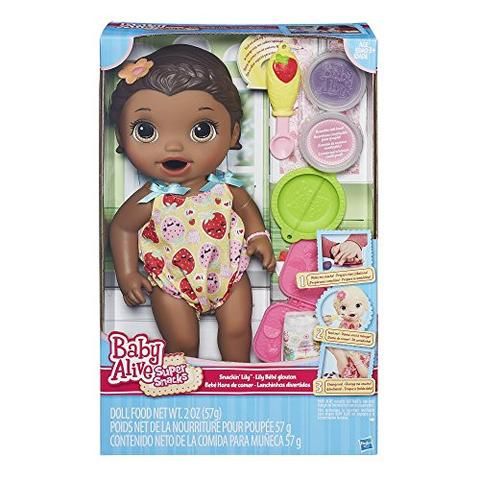 But this does not mean that by buying yogurt, kefir or fermented baked milk marked “probiotic”, we will enrich the body with healing microorganisms. When bacteria are grown in a laboratory and tested on humans, they make sure that each test subject receives a certain dose. Most manufacturers don't measure how many good bacteria are in each package of a product. Also, they make no effort to keep the bacteria "alive" as advertised. Therefore, most often we eat and drink probiotic placebo - products with a certain amount of useful, but, alas, dead bacteria.
But this does not mean that by buying yogurt, kefir or fermented baked milk marked “probiotic”, we will enrich the body with healing microorganisms. When bacteria are grown in a laboratory and tested on humans, they make sure that each test subject receives a certain dose. Most manufacturers don't measure how many good bacteria are in each package of a product. Also, they make no effort to keep the bacteria "alive" as advertised. Therefore, most often we eat and drink probiotic placebo - products with a certain amount of useful, but, alas, dead bacteria.
Raw food cleans
belchonock/Depositphotos.comBooks: The raw food detox diet Natalie Rose, The raw cure by Jesse Jay Jacobi, The raw food cleanse Penny Shelton.
Thesis
Cooked food accumulates toxins in the body. And toxins are a source of excess weight, as well as an inspirer of cancer. While natural raw foods, on the contrary, cleanse the body. The body recognizes and easily assimilates such foods.
In addition, cooking destroys nutrients and denatures enzymes important for healthy life. Finally, some products simply do not fit together. Therefore, you should not eat fruits and vegetables at the same time, otherwise you will not get any benefit from either the first or the second.
Antithesis
Detox programs involve the cleansing of toxins through diet. But even without it, we have detox organs that are designed to free the body from everything alien and harmful - these are the liver and kidneys. If they don't work, carrots won't help.
Research on the anticarcinogenic properties of raw foods is controversial. Some argue that a raw food diet reduces the risk of cancer; others that, on the contrary, cooked vegetables are safer.
Cooking really kills nutrients. At the same time, the useful lycopene contained in tomatoes is better absorbed if the tomatoes are cooked, moreover, with some kind of fat. The "performance" of enzymes depends on many factors: temperature, pH, and others.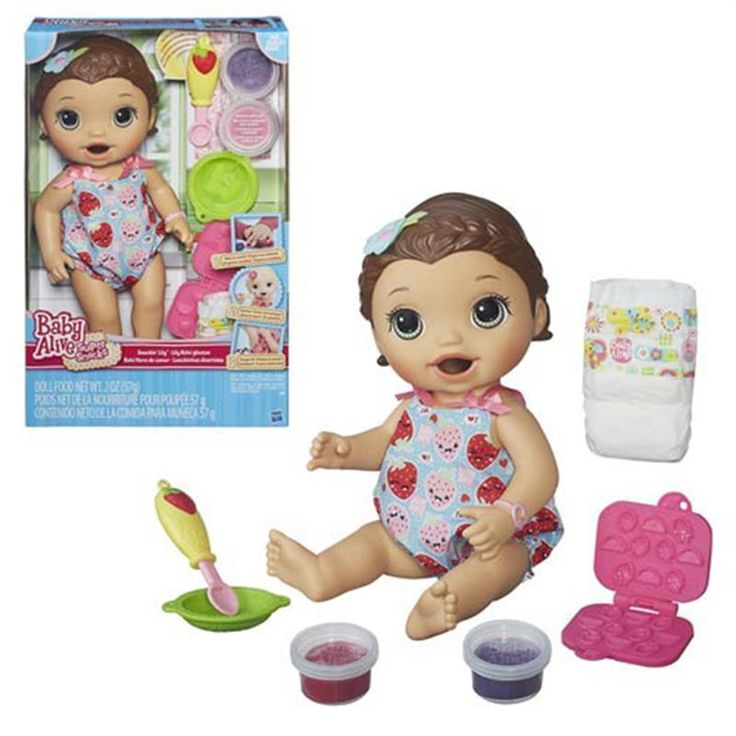 And it is impossible to determine what deprived the enzymes of their natural properties: the acidic environment of the stomach or cooking.
And it is impossible to determine what deprived the enzymes of their natural properties: the acidic environment of the stomach or cooking.
And finally. There are no convincing arguments in science why it is impossible to combine vegetables and fruits, as well as any other products.
Time to get off the sugar needle
vjotov/Depositphotos.comBooks: The suicide by sugar Nancy Appleton, The sugar blues by William Dufty, The sugar nation by Jeff O'Connell, Carly's overcoming sugar addiction Randolph Pitman.
Thesis
Today only lazy people do not scold sugar. According to endocrinologist, MD, author of several books on the problem of obesity, and popular lectures ("Sugar: the bitter truth", "Fat chance: fructose 2.0") Robert Lustig, sugar leads to obesity, catalyzes old age, "litters" the liver and has many more harmful properties.
Why it is worth eliminating sugar from the diet
But most importantly, the brain's reaction to sugar is about the same as to cocaine and heroin. Nancy Appleton, Ph.D. in Psychology, cites the key problem is that although our mind says "I don't want this," our body says "I need it." And manufacturers, in turn, are in no hurry to warn how wide the range of products containing sugar is.
Nancy Appleton, Ph.D. in Psychology, cites the key problem is that although our mind says "I don't want this," our body says "I need it." And manufacturers, in turn, are in no hurry to warn how wide the range of products containing sugar is.
The bitter truth about sugar
Antithesis
Nobody says that a piece of biscuit cake soaked in syrup and sprinkled with chocolate is healthy. But it's not cocaine.
Most research and testing is done on rats. It is important that the body of rodents and the human body react to a particular stimulus in the same way. Lab rats love sugar. Its consumption is addictive in them, as it stimulates the brain area responsible for pleasure. In the course of the experiments, sugar affected these centers more than cocaine.
But human studies show a completely different picture. If sugar really caused an addiction like a drug, then it would be logical to assume that the feeling of hunger was equated with the desire to eat something sweet, and overweight people would eat only cakes and sweets. But none of these scenarios are typical. Moreover, studies show that sugar blocks the receptors that cause a surge of "drugs" in the brain (opioids, endorphins). There are many sweet tooth in the world. There are those who abuse sugar and cannot live without it. But these are rather personal problems - at the physiological level, sugar is not addictive.
But none of these scenarios are typical. Moreover, studies show that sugar blocks the receptors that cause a surge of "drugs" in the brain (opioids, endorphins). There are many sweet tooth in the world. There are those who abuse sugar and cannot live without it. But these are rather personal problems - at the physiological level, sugar is not addictive.
Superfoods cure all diseases
IMelnyk/Depositphotos.comBooks: The SuperFoods Rx by Stephen Pratt and Cathy Matthews, The super immunity foods by Frances Sheridan Goulart.
Thesis
Superfoods (SuperFood, "superfood") have superpowers, they are recommended by superstars in their superdiets. If you form a diet of superfoods, you can get rid of almost all diseases. After all, superfoods contain antioxidants that prevent cancer, strengthen the immune system, increase metabolism and, of course, promote weight loss.
For example, Californian surgeon Stephen Pratt developed a diet based on 14 superfoods (beans, blueberries, cabbage, oranges, and so on). If you eat them constantly, you will lose weight, the skin will be beautiful and the aging process will slow down.
If you eat them constantly, you will lose weight, the skin will be beautiful and the aging process will slow down.
Antithesis
According to some studies, antioxidants do protect cells from cancer in the laboratory. They neutralize free radicals that cause processes in the body similar to rust and decay. Free radicals are known to destroy everything, including microorganisms. What's wrong with killing viruses and bacteria? That they are part of the immune system and the body must fight them.
There is no clear answer as to whether antioxidants prevent cancer. Some studies show that this is the case; others - that antioxidants do not kill cancer cells and even reduce the effectiveness of chemotherapy. Obviously, laboratory experiments are one thing, and the human body is quite another. A cell in a petri dish may react in one way, but within a complex "ecosystem" of organs, in a different way.
Dosing is even more difficult. In the laboratory, scientists use extracts (that is, concentrated raw material extracts) of superfoods in certain dosages. The "eat blueberries" recommendation doesn't explain how much you need to eat to recharge your antioxidants. So, to feel the antioxidant effect of green tea, you need to drink several cups a day (three or more). And this is not the best idea, given that the tannins contained in tea interfere with the absorption of vitamin B9..
The "eat blueberries" recommendation doesn't explain how much you need to eat to recharge your antioxidants. So, to feel the antioxidant effect of green tea, you need to drink several cups a day (three or more). And this is not the best idea, given that the tannins contained in tea interfere with the absorption of vitamin B9..
Superfoods are good for you. But they are not a panacea for all diseases. You can not rely on them in the issue of cancer prevention. After all, superfood is primarily food, it contains many components that affect the body in different ways. It is more effective to use individual components derived from a particular product in dosages verified by specialists.
Drink the skinny juices
belchonock/Depositphotos.comBooks: The skinny juices by Daniel Omar, The, sick & nearly dead: how fat fruits and vegetables changed my life Joe Cross.
Thesis
Many have heard the story of Australian businessman Joe Cross. The young man weighed 150 kg, was ill and felt disgusting. Until one fine moment he turned to a healthy nutrition specialist, Dr. Joel Furman. He recommended fasting on juices from vegetables, fruits and herbs. Joe ate juices for two months and lost 30 kg.
The young man weighed 150 kg, was ill and felt disgusting. Until one fine moment he turned to a healthy nutrition specialist, Dr. Joel Furman. He recommended fasting on juices from vegetables, fruits and herbs. Joe ate juices for two months and lost 30 kg.
The fresh juice diet is popular because it is believed to help detoxify the body. Juices are pure health. They have more nutrients than whole fruits and no indigestible fiber.
Antithesis
Liver and kidneys cleanse the body of toxins. Nothing will replace these organs. In addition, there is no evidence that juice is an invaluable source of nutrients. But there are real problems that can be amassed if you eat only juice. Bacteria quickly settle in freshly squeezed juice. If you drink it, then immediately.
There is a lot of "invisible" sugar in fruits, that is, purely psychologically, we do not notice that we are consuming something sweet, and therefore we easily violate the dosage.
Also, fructose and acids contained in fruits have a negative effect on tooth enamel.
Juices by themselves are not terrible. The question is in the approach to their consumption. Extreme passion for juices can be detrimental to health.
Eat Like a Caveman and Be Healthy
designer491/Depositphotos.comBooks: The paleo answer by Lauren Cordain, The paleo solution by Robb Wolfe, The Primordial Body , the primal mind "(The primal body. Primal mind) Nora Gedgaudas.
Thesis
The Paleo diet is based on the idea that we should eat the way people did in the Stone Age, that is, eliminate grains, dairy and legumes, sugar, processed oils and eat food that was available to our ancestors , hunters and gatherers (fish, meat, berries, nuts, roots). After all, 10 thousand years ago, people did not know about obesity. Therefore, in order to be slim and healthy, we must eat natural food.
Antithesis
We evolve, and every few thousand years we can state obvious changes.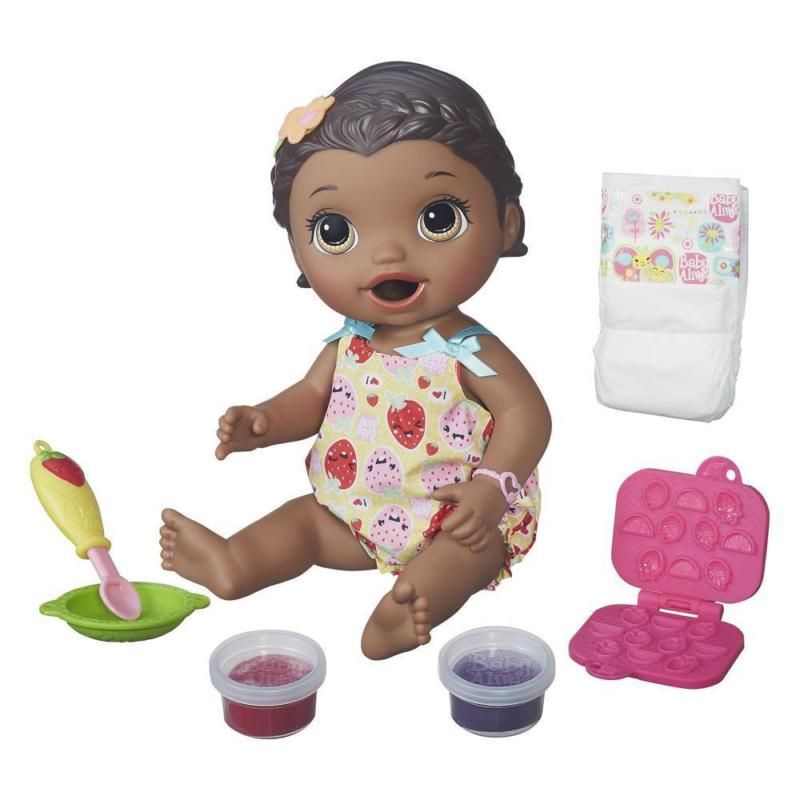 So humans developed a tolerance for lactose, which in turn allowed us to get calcium from milk. Also, our digestive system has adapted to legumes, which are high in protein and low in fat. And the paleo diet forbids both dairy and beans. But historical identity and proper nutrition are not the same thing.
So humans developed a tolerance for lactose, which in turn allowed us to get calcium from milk. Also, our digestive system has adapted to legumes, which are high in protein and low in fat. And the paleo diet forbids both dairy and beans. But historical identity and proper nutrition are not the same thing.
Moreover, we are not the only ones evolving. Even if you become a farmer and eat meat and vegetables grown in your backyard, you still cannot equate yourself with the ancient people. Animals and plants have also changed. Corn, for example, was once a weed and is now a healthy food crop.
In addition, we imagine the Paleolithic hunter as a strong, lean fellow. But it's not. Archaeological excavations prove that then people also had health problems, including arterial disease.
Vegetarianism is the path to ultra slimness
exe2be/Depositphotos.comBooks: The forks over knives by Gene Stone and Caldwell Esselstyn, The China study by Colin Campbell.
Thesis
On the basis of the works of American scientists, practicing doctors (Caldwell Esselstyn, Colin Campbell and others), the film Forks Instead of Knives was made. It became a worldwide bestseller. It says that proteins and fats of animal origin provoke a number of serious diseases (diabetes, cardiovascular diseases, etc.). While the transition to a completely plant-based diet, on the contrary, heals the body.
The link between dietary habits and chronic diseases is also mentioned in the famous book by biochemist Colin Campbell. He studied mortality statistics in 65 counties in China. It turned out that when the Celestial Empire was dominated by rural residents and the basis of their diet was plant foods, cancer and cardiovascular disease were less common. Everything was spoiled by globalization, which brought more fatty animal food.
Antithesis
The film does not directly state that a vegetarian diet low in fat (including vegetable) stops carcinogenic processes.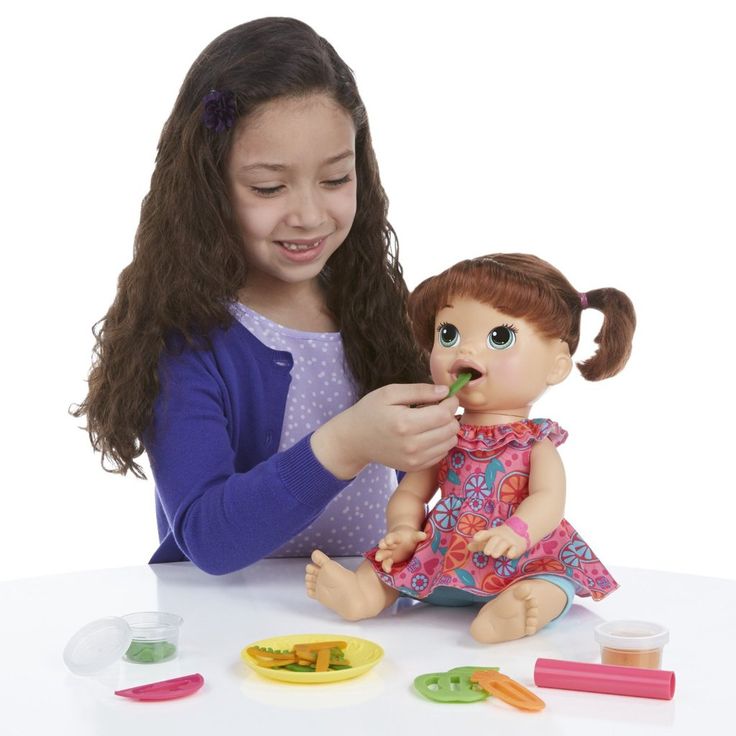 Because it's a lie. Research shows that veganism can prolong life when a person already has colon cancer. But other studies show that vegetarians are simply more health conscious than the rest of the world's population.
Because it's a lie. Research shows that veganism can prolong life when a person already has colon cancer. But other studies show that vegetarians are simply more health conscious than the rest of the world's population.
As regards the predisposition of vegetarians and meat-eaters to heart disease, the former are indeed less susceptible to them. But they tend to have higher mortality rates from other diseases.
Although experts acknowledge that there is a strong correlation between the amount of fat and protein in the diet and the incidence of cancer and heart disease in the China Study, Campbell's theory has a number of shortcomings. So, critics note that the scientist places too much emphasis on the dangers of animal proteins and uses statistics as a background for his hypothesis. Even Dr. Campbell himself admits that not necessarily 100% plant foods are better than 95% vegetarian diet. In addition, there are conflicting studies. For example, the French eat a lot of animal foods, including those with saturated fats, but have a low rate of cardiovascular disease.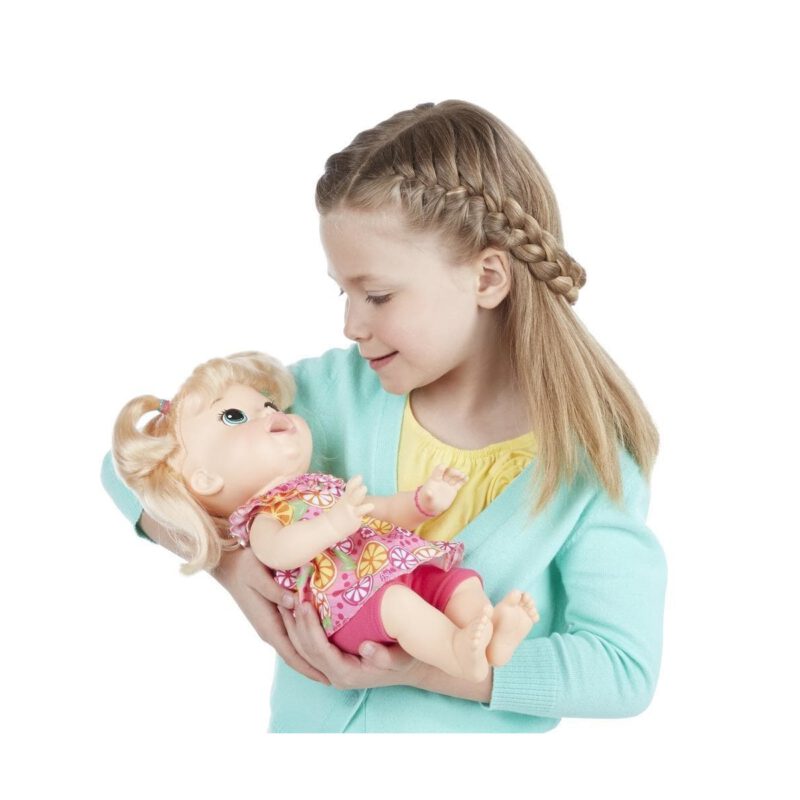
Carbohydrates are a brain killer
egal/Depositphotos.comBook: The grain brain by David Perlmutter.
Thesis
Carbohydrates, or rather grains, destroy our brain. So says the neurologist, nutritionist David Perlmutter. It's all about gluten, which is found in wheat, rye, barley and products made from them. Gluten provokes memory problems, insomnia and is addictive. But Alzheimer's disease, Parkinson's disease, attention deficit hyperactivity disorder can be avoided. If you abandon cereals and enrich the diet with more fatty foods.
Antithesis
Firstly, this idea is contrary to the system of plant nutrition. The Forks & Knives website has a separate page with a bunch of links proving the Perlmutter and Davis theories (about wheat and belly fat) wrong.
Second, the arguments for a low-carbohydrate diet are not convincing. Although there are studies that allow a link between obesity and Alzheimer's disease. But they do not prove that obesity is the cause of this disease. Critics are convinced that there is no connection between gluten and cognitive impairment. In addition, the book presents as proven fact a preliminary study that examined the link between Herter's disease and gluten.
But they do not prove that obesity is the cause of this disease. Critics are convinced that there is no connection between gluten and cognitive impairment. In addition, the book presents as proven fact a preliminary study that examined the link between Herter's disease and gluten.
However, the beauty of Perlmutter's work is that it showed how many buns we eat. Grains are often the basis of our diet. By reducing them and favoring vegetables, we can make our diet healthier.
Total
As you can see, many of the theories presented in popular books about healthy eating are unsteady and contradictory. This does not mean that they do not work (for specific people in a specific period of life). Also, all the authors are right at least that in order to switch to a healthy diet, you need to radically review your diet and study your body, and not just eat a vegetable salad a couple of times a week.
But there is no miracle diet in the world that would burn fat, cure diseases and turn back time.


